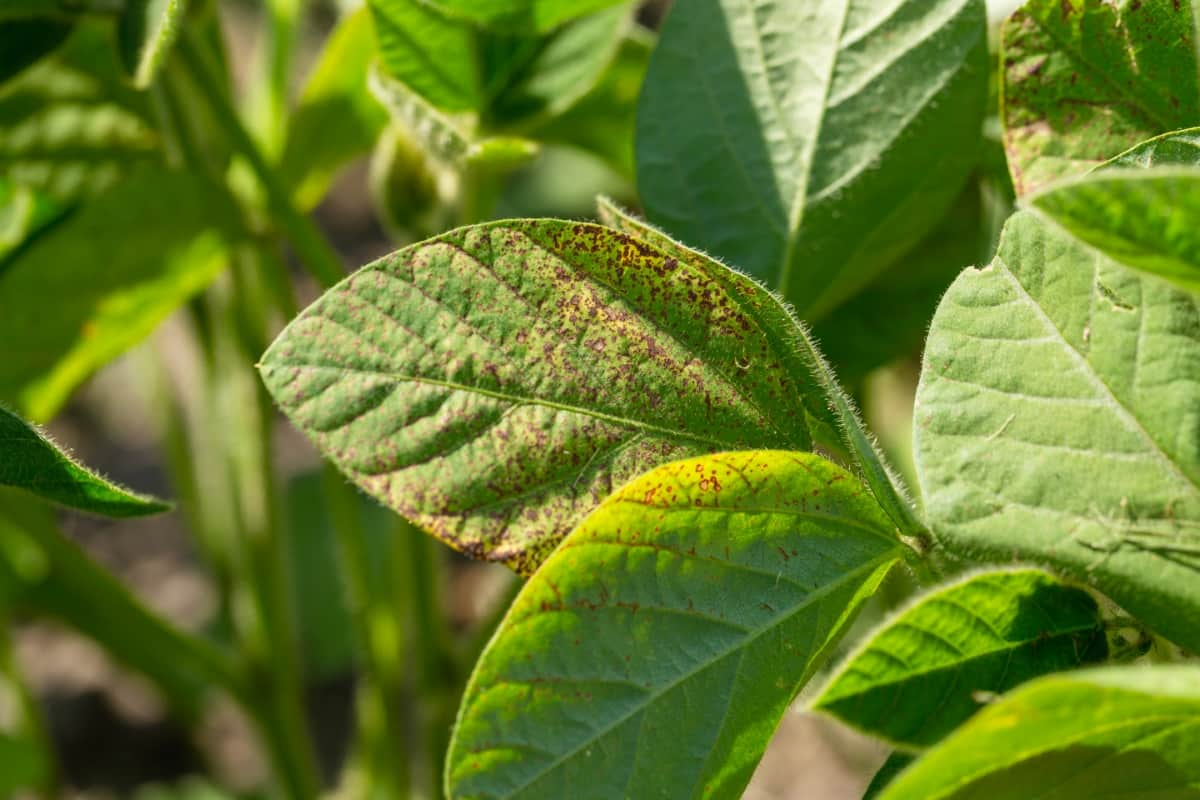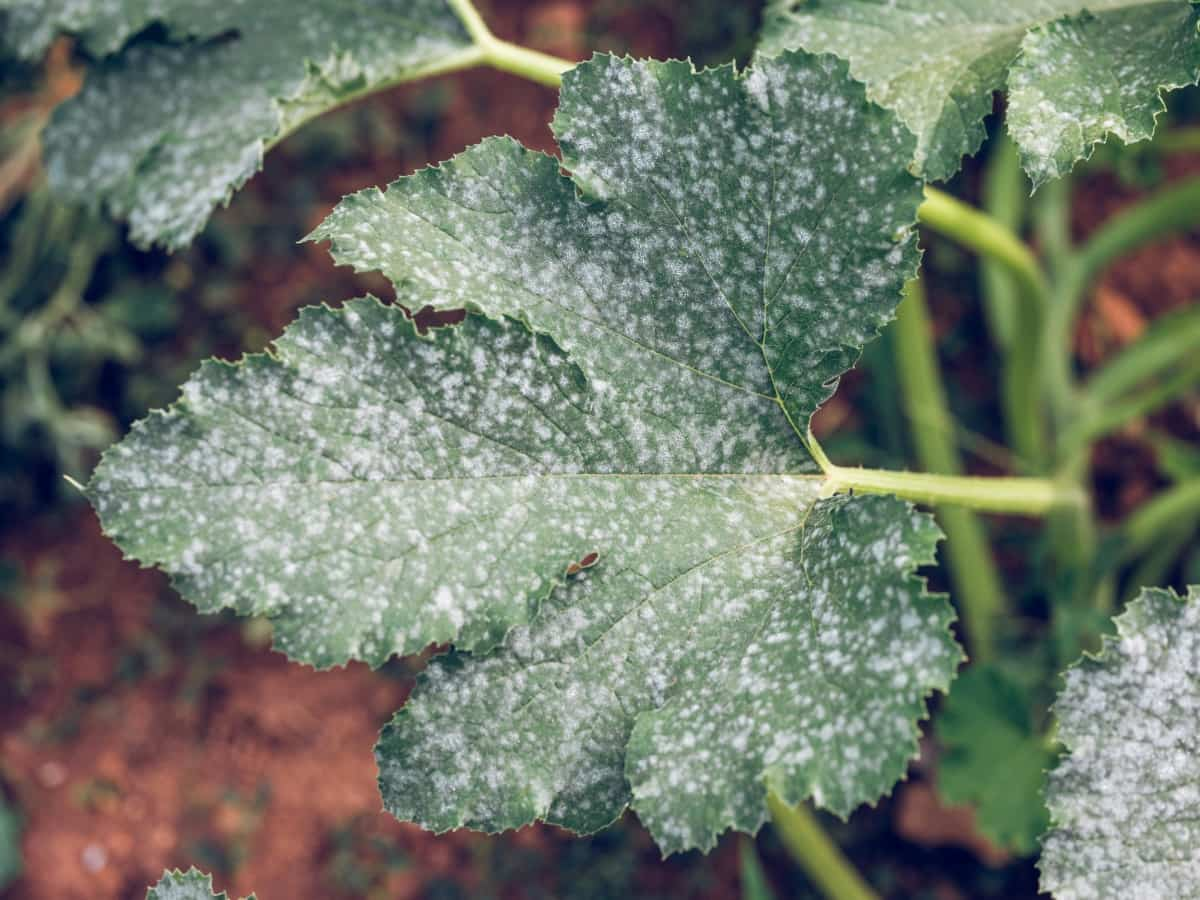Leaf spot, a common plant ailment, stems from fungal or bacterial origins. Identification involves spotting discolored, often circular, lesions on leaves. Prevention involves proper plant spacing, adequate air circulation, and avoiding overhead watering. Treatment includes fungicides or bactericides and removing affected leaves.

How to Prevent Leaf Spot
Understand Leaf Spot Causes and Risk Factors
Several plant species are vulnerable to leaf spot diseases, which are primarily fungus-based but may also involve bacteria and viruses. Plants are more susceptible to these diseases in environments with high humidity and moderate temperatures. Two major contributing reasons include dense planting, which restricts airflow, and prolonged moist foliage, often from irrigation techniques.
Unhealthy plants and poor soil conditions further increase vulnerability. Plants should be spaced properly, overhead watering should be avoided, and enough air circulation should be encouraged. Fungicides may be used to control a disease, but which one to employ will depend on the particular pathogen causing it. For efficient control, plants must be regularly inspected for the first indications of leaf spots.
How to Identify Leaf Spot: Symptoms and Signs to Look For
- Spots on Leaves: Typically circular, they may have different colors like brown, black, or yellow.
- Patterns: These spots may be isolated or form clusters.
- Leaf Changes: Infected leaves might be yellow, brown, or drop prematurely.
- Ring Patterns: Some spots have a “bull’s-eye” look.
- Fungal Growth: In humid conditions, a fuzzy or powdery growth may appear.
- Size Variation: Spots range from tiny dots to large patches.
- Spread: Initially small, spots can grow and merge.
How to Prevent Leaf Spot with Cultural Control Methods
- Spacing: Ensure adequate space between plants to improve air circulation, reducing moisture that fosters leaf spots.
- Watering Techniques: Water at the base of plants, not overhead, to keep foliage dry and less susceptible to fungal infections.
- Sanitation: Regularly remove and discard the infected leaves and debris to prevent spread.
- Pruning: Trim overcrowded areas to enhance airflow and light penetration, discouraging fungal growth.
- Healthy Soil: Maintain nutrient-rich, well-draining soil to support robust plant health, making them less prone to disease.
- Resistant Varieties: Choose plant species or varieties known for resistance to leaf spot diseases.
How to Manage Leaf Spot with Biological Control Methods
It’s important to concentrate on natural tactics that impede the disease-causing microorganisms in order to manage leaf spot disease by employing biological management approaches. Using helpful microorganisms to combat hazardous infections, such as certain bacteria and fungi, is one successful strategy. By directly applying these biocontrol chemicals to plants or soil, disease severity may be decreased, and plant resistance can be increased.
In case you missed it: How to Control Okra Leaf Spot Naturally: How to Get Rid of This with Natural and Organic Treatment

As healthier plants are more disease-resistant, improving plant health via appropriate nutrition management and watering techniques is a further approach. Furthermore, crop rotation and the use of disease-resistant plant cultivars may greatly lower the occurrence of leaf spots. These techniques provide a workable substitute for chemical treatments and constitute a complete biological control strategy that is sustainable and friendly to the environment. They are also paired with routine monitoring for the early diagnosis of disease.
Chemical Control of Leaf Spot with Fungicides and Other Treatments
Leaf spot, a common plant disease, often requires chemical intervention for effective control. Fungicides, the primary treatment, vary in type and application method. Systemic fungicides, absorbed by the plant, offer internal protection, while contact fungicides create a protective barrier on the leaf surface.
Timing is crucial; early application can prevent or reduce outbreaks. Non-chemical treatments include proper watering, avoiding overhead irrigation, and ensuring good air circulation. Culturally, selecting resistant varieties and removing infected debris also help. While chemical control is effective, it should be used judiciously to minimize environmental impact. Integrated management, combining chemical and non-chemical strategies, often yields the best results in controlling leaf spot.
Integrated Pest Management (IPM) Strategies for Leaf Spot
Integrated Pest Management (IPM) for Leaf Spot involves a multi-faceted approach. Firstly, it’s crucial to select disease-resistant plant varieties and use certified, healthy seeds or transplants. Crop rotation helps in breaking the disease cycle. Good field sanitation, like removing plant debris, is effective in reducing spore spread.
Regular monitoring for early detection of leaf spots is key, followed by timely and selective use of fungicides based on severity. Employing biological controls, such as beneficial microbes that antagonize the leaf spot pathogens, can also be part of the strategy. Maintaining balanced soil fertility and proper irrigation practices minimizes plant stress and susceptibility. These combined strategies, tailored to specific conditions and plants, form the core of IPM for managing leaf spot diseases effectively.
How to Choose the Right Fungicide for Leaf Spot Management
Selecting the best fungicide for leaf spot control necessitates following many crucial measures. Identify the leaf spot disease precisely in the first place since various fungi call for different treatments. For a precise diagnosis, consult a trustworthy source on plant pathology. Second, think about how the fungicide works. Systemic fungicides into the plant and provide extended protection. Conversely, contact fungicides need to be applied precisely while they are still on the surface.
In case you missed it: Cercospora Leaf Spot Management in Chilli Pepper: Symptoms, Identification, Treatment, Chemical, Biological, Natural, and Organic Control

Third, to stop the emergence of resistance, switch up the fungicides you use by using various active ingredients. Fourth, make sure you apply the product safely and effectively while adhering to the label’s environmental compliance guidelines. Finally, for total plant health, combine the use of fungicides with cultural techniques such as appropriate irrigation and crop rotation. This strategy minimizes resistance development and environmental effects while optimizing efficacy.
Timing of Leaf Spot Fungicide Applications
For leaf spot management, the timing of fungicide treatments is crucial to efficacy. The first application should ideally take place at the first indications of leaf spot or, in high-risk situations, proactively shortly before symptoms usually manifest. The need for further treatments is based on the fungicide’s residual activity as well as outside variables like humidity and rain, which may hasten the development of the disease.
A 10-to 14-day gap is usually beneficial. However, this might change depending on the severity of the disease and the local environment. The important thing is to keep an eye out for leaf spots on the crop and modify the timing according to weather predictions and disease development. This strategy reduces needless treatments, optimizes fungicide effectiveness, and aids in controlling the development of resistance in the pathogen population.
Resistance Management for Leaf Spot Fungicides
- Rotation and Mix
- Use different fungicide groups regularly.
- Mix fungicides from multiple groups for combined efficacy.
- Targeted Application
- Apply fungicides only when necessary, based on disease thresholds.
- Consider environmental conditions favoring leaf spot development.
- Dose and Timing
- Use recommended doses; underdosing can encourage resistance.
- Apply at optimal times for maximum effect.
- Integrated Pest Management (IPM)
- Combine chemical controls with cultural practices, like crop rotation and resistant varieties.
- Monitor fields for early detection and targeted control.
Frequently Asked Questions (FAQ) on Leaf Spot
Can Over-Fertilization Lead to Leaf Spot?
Over-fertilization, especially with nitrogen, can make plants more susceptible to Leaf Spot.
How Do I Differentiate Leaf Spot from Other Leaf Diseases?
Leaf Spot is characterized by distinct spots, often with a halo, unlike other uniform discolorations or deformations.
In case you missed it: Cercospora Leaf Spot Management in Green Gram: Symptoms, Identification, Treatment, Chemical, Biological, Natural, and Organic Control

Conclusion
To prevent Leaf spots, identify early symptoms like discolored spots on leaves. Reduce moisture on foliage, ensure good air circulation, and apply fungicides. Regularly inspect plants and remove affected parts to prevent spread. Use disease-resistant varieties for proactive control.
- Deworming Schedule for Dogs/Puppies: A Beginners Guide
- How to Prevent and Control Parasites in Goats
- Beneficial Insects in Pest Management
- Natural Solutions for Pest Control in Flower Gardens
- Types of Fungicides Used in Agriculture
- Common Issues in the Fruit Development Stage of Pomegranate Farming
- Fruit Development Issues in Papaya: Easy Solutions and Treatment
- Soil-Borne Diseases and How to Protect Your Plants
- Practices to Prevent Disease Spread in the Garden